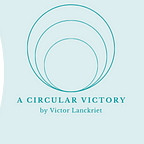Voting with your wallet
Hi everyone and welcome to the 16th blog post of A Circular Victory! Last week we analysed the business case of Teemill. Teemill has an open platform that allows fashion brands to use Teemill’s circular processes and supply chain. To find out more about this interesting case, go back to post 15!
This week, we are going to discuss a very interesting dynamic that I like to call “Voting with your wallet”.
Voting with your wallet
This is a concept that we already briefly discussed in the sixth blog post of this series. However, today we are going to dig deeper into this dynamic. As discussed in blog post six, “voting with your wallet” is a way in which we as individuals can help to push change, even with the limited power we have. In order to explain this properly, I want to look at what drives companies to act the way they do.
What drives company decisions?
I want to preface this analysis, by saying that there are always exceptions. In this explanation, I’ll talk in general, about what I believe drives the decisions in the average company. And in the end, that answer is usually pretty straightforward: money. Companies will make decisions that will optimise their profits. This is especially true for public companies. Public companies explicitly have the duty to create and optimise value for their shareholders. This means that the primary driver for any decision is whether it will increase profits or not. And for a long time now, profitability and sustainability have been two goals that are hard to pursue at the same time.
Sustainable manufacturing has been more expensive, for example, and companies did not get any penalties for polluting or other negative externalities until recently. Additionally, the linear economy gave possibilities for higher profits than more sustainable alternatives. The smartphone industry is a good example of this. Smartphone manufacturers decided that they could make more profit when they sell customers a completely new phone, rather than repairing and upgrading the same phone over several years. In order to do so, they participated in “planned obsolescence” as well as making it harder and harder to repair their phones.
Making change as a consumer
Now, what can we do as a consumer that will help these companies at least look into the possibility of sustainability and Circularity? We can “vote with our wallets”. Every time we consciously buy a more sustainable alternative, we send a signal to companies. We tell them that we value sustainability and that we are more likely to buy a sustainable product. So in order to optimise their profits, companies will have to start creating more sustainable alternatives. Essentially, we are casting a vote for the kind of products we would like to see with every purchase. More than anything else, companies will chase the bottom line. So in order to see the change in companies, you have to impact their bottom line.
This is a concept that extends beyond Circularity and sustainability. It is an important and powerful dynamic in the market that individuals shouldn’t underestimate. We can use it to achieve things from more ethical products to product features we’d like to see.
A great example of this is fashion. Fast fashion was great for clothing companies. They could offer many different options to consumers at low prices and still turn an attractive profit. Even though this is such an attractive business model for them, we are now seeing more and more sustainable options, even at big brands like Zara. The one and only reason for that is that people started putting more value on sustainability. Zara felt that they would lose sales if they did not offer a sustainable alternative. This is a real-world example of how purchasing patterns drive companies to change.
So in conclusion: pay attention to your purchases and you will be able to impact the world profoundly!
